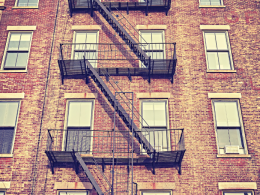What makes Devonshire House London stand out in the heart of Mayfair? Once the grand residence of the Dukes of Devonshire, this historic landmark has evolved into a symbol of refined urban living.
Whether you’re a history enthusiast or a fan of London’s architectural legacy, Devonshire House offers a glimpse into the city’s elegant past and its continued relevance in contemporary times.
What is Devonshire House London?

Ever wondered what makes certain addresses in London timelessly prestigious? Among the crown jewels of Mayfair lies Devonshire House London, a name etched into British architectural and social history.
Once a grand aristocratic mansion and now a modern landmark of luxurious living, this property encapsulates both heritage and high-end real estate in central London.
Originally known for being the opulent home of the Dukes of Devonshire, Devonshire House has transitioned over centuries. Located prominently near Piccadilly and Green Park, its legacy continues to shape the identity of Mayfair.
While the original 18th-century mansion was demolished in the 1920s, the new development on its site continues to bear the name with pride, encompassing exclusive office spaces, premium flats, and a distinct charm that nods to its noble past.
Highlights of Devonshire House’s Significance
- Named after the aristocratic Cavendish family
- Formerly one of London’s most magnificent townhouses
- Rebuilt into an office complex in the 1920s after original demolition
- Maintains its legacy through architecture, name, and location
Devonshire House remains a symbol of class and continuity, connecting contemporary Mayfair with the splendour of a bygone era.
Where is Devonshire House Located?
Devonshire House enjoys a prime location in the heart of Mayfair, London’s most elegant and affluent district. It stands on the corner of Piccadilly and Berkeley Street, right beside Green Park and a short walk from Hyde Park and Grosvenor Square.
This central positioning not only offers visual grandeur but also ensures exceptional accessibility to iconic London venues.
Whether you’re heading to Bond Street for luxury shopping or catching an exhibition at the Royal Academy of Arts, everything is within easy reach from this address.
Nearby Landmarks
- Green Park
- Buckingham Palace
- Ritz Hotel
- Fortnum & Mason
- Hyde Park Corner
- Berkeley Square
The positioning of Devonshire House makes it ideal for those seeking not just property value, but cultural relevance. Whether you’re an investor or a history enthusiast, this address resonates with timeless appeal.
What is the Historical Significance of Devonshire House?
Devonshire House is not just a piece of real estate; it’s a cornerstone in British history. Built in the 18th century after the original Berkeley House was destroyed by fire, the new mansion was designed by William Kent for William Cavendish, 3rd Duke of Devonshire.
For nearly 200 years, it served as a centre of social and political activity. The house was renowned for hosting grand balls, royal visits, and political discussions.
In fact, during the Georgian and Victorian eras, it was considered one of the most important residences in aristocratic London.
Key Historical Moments
- Built in 1733 following the fire of Berkeley House
- Hosted political gatherings during the Whig era
- Home to the famous Georgiana Cavendish, Duchess of Devonshire
- Used for war purposes during WWI
- Demolished in 1924 due to maintenance costs and changing urban needs
Despite its demolition, Devonshire House left a cultural and architectural mark that is remembered and respected today.
Who Originally Owned Devonshire House?

The original owner of Devonshire House was William Cavendish, 3rd Duke of Devonshire, a leading Whig politician in the 18th century.
The Cavendish family, known for their immense land holdings and political influence, built this home to establish their presence in London and create a base for high society engagements.
Over time, several Dukes of Devonshire resided in the property. Among the most famous was Georgiana Cavendish, a fashion icon and political influencer of her time. She transformed the house into a hub of cultural events, elevating its status across aristocratic circles.
The Cavendish Legacy
- One of Britain’s wealthiest and most influential noble families
- Also owners of Chatsworth House in Derbyshire
- Played significant roles in the House of Lords and the Whig party
- Devonshire House symbolised their status in London society
The house remained in the family’s hands until the early 20th century when its upkeep became unsustainable, leading to its sale and eventual demolition.
How Has Devonshire House Changed Over Time?
The original Devonshire House, as known in the 18th and 19th centuries, no longer exists. After standing for nearly two centuries, it was demolished in 1924. In its place, a commercial office building was developed in the 1920s by developer Sir Robert McAlpine.
This transformation reflects London’s shift from aristocratic estates to a business-centric capital. Yet, the current building still bears the name Devonshire House, maintaining a direct link to its heritage.
Designed with a sense of classicism and structure, the current façade nods to the house’s history while functioning as a modern property.
Key Transformations
- 1733: Constructed by William Kent
- 1924: Demolished due to high maintenance costs
- 1926: Rebuilt as a modern office and commercial block
- Today: Houses business offices, elegant residences, and luxury amenities
Despite its physical changes, Devonshire House retains an aura of historic elegance and remains an important reference point in Mayfair’s urban landscape.
Is Devonshire House Open to the Public Today?
No, Devonshire House is not open to the public as a historic attraction. Since the original mansion was demolished, the new structure serves private and commercial purposes.
This includes high-end offices and, in some parts, luxury residential apartments. As such, public tours or visits are not available.
However, the building can still be admired from the outside. Its architecture and prime location near Green Park make it a frequently photographed site. It’s also often included in architectural walking tours of Mayfair due to its historical importance.
Access Information
- No public museum or gallery inside
- Offices operate privately
- Occasional corporate events may offer limited access
- Photogenic exterior with historic plaques
While you can’t walk through its corridors as you might in a heritage estate, the building continues to make a visual and historical impact.
What Stands on the Site of the Original Devonshire House?

Where once stood grand ballrooms and sweeping staircases, now stands a structured and elegant office complex. The current Devonshire House building sits exactly on the site of the old mansion, preserving the name and to some extent the prestige of its predecessor.
Constructed between 1924 and 1926, the new building is part of London’s evolution into a global business hub. Though it lacks the ornate interiors of the original, it retains the sense of being part of a grand heritage.
Current Use of the Site
- Commercial offices for major firms
- High-end residential units in selected parts
- Maintains Mayfair’s architectural symmetry
- Frontage facing Green Park and Berkeley Street
The modern building is functional yet tasteful, ensuring that while the aristocratic flair may be gone, the legacy endures.
Are There Other Buildings Named Devonshire House in London?
Yes, and that can sometimes cause confusion. Old Devonshire House in Holborn is a separate historic property that predates the Mayfair mansion. Built in 1670, it survived the Great Fire of London and is notable for its historic timber structure.
In addition, there’s a Devonshire House hotel in West London, known for its Victorian architecture and modest accommodation offerings. These locations, although sharing the name, are entirely different from the grand Mayfair estate.
Other “Devonshire House” Properties
- Old Devonshire House, Holborn: Historical timber-framed townhouse
- Devonshire House Hotel, Kensington: Budget hotel with Victorian design
- Various apartment complexes across the UK
Understanding the context of each property is key to appreciating their individual importance and architectural style.
What Do Visitors Say About Devonshire House London?
According to recent TripAdvisor reviews and user feedback, the Devonshire House area in Mayfair receives high praise for its location, safety, cleanliness, and aesthetic appeal.
While the building itself isn’t open to the public, its exterior and setting continue to impress passersby and city explorers.
People often note the serene atmosphere despite being located in such a busy part of London. Visitors also appreciate the classic architectural lines and the beautiful trees surrounding the Green Park side of the property.
Common Review Highlights
- Clean and well-maintained streets
- Great walking routes nearby
- Ideal photography location
- Beautiful symmetry and heritage feel
While it may not offer tours, Devonshire House certainly offers visual and historical value.
Why is Devonshire House Still Relevant Today?

Devonshire House holds ongoing relevance due to its historical depth, architectural importance, and prime real estate value.
It represents the shift in London from aristocratic powerhouses to modern commercial centres, and its transformation tells the story of an evolving city.
For developers, it is a prime location. For historians, it is a touchpoint to aristocratic London. For locals and tourists, it adds character to Mayfair and remains one of the most elegant sites in central London.
Continuing Legacy
- Symbol of transformation in British architecture
- Adds to Mayfair’s cultural fabric
- Popular subject for books and documentaries
- Still retains the original name and street layout
Its blend of old-world charm and modern functionality is why Devonshire House London continues to stand out in the city’s ever-changing skyline.
Conclusion
Devonshire House London is far more than just a building. It’s a window into the evolution of British high society, the architectural ambitions of the 18th century, and the shifting priorities of urban development.
From an elite mansion to a functional yet graceful modern space, it encapsulates everything Mayfair stands for, elegance, heritage, and resilience.
Whether you’re admiring it from the sidewalk of Piccadilly or working within its contemporary offices, you’re engaging with centuries of London’s rich past. Its transformation from a stately home to a commercial cornerstone is a narrative that mirrors the transformation of London itself.
FAQs
What year was the original Devonshire House built?
The original Devonshire House was constructed in 1733 after the previous Berkeley House was destroyed by fire.
Who designed the original Devonshire House?
The mansion was designed by renowned architect William Kent for the 3rd Duke of Devonshire.
Why was Devonshire House demolished?
It was demolished in 1924 due to the high cost of maintenance and the declining relevance of such large homes in urban settings.
Is Devonshire House a residential or commercial property now?
Today, it is a mix of commercial office space with some high-end residential units.
Can the public enter Devonshire House in Mayfair?
No, it is not open for public tours but can be admired from the outside.
Is Devonshire House connected to the Old Devonshire House in Holborn?
No, they are different properties with separate histories and architecture.
What makes Devonshire House important in British architecture?
It reflects the grandeur of aristocratic living in Georgian and Victorian London and the shift to modern urban use in the 20th century.








